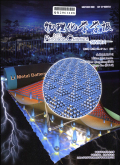物理化学学报2024,Vol.40Issue(8):P.50-63,14.DOI:10.3866/PKU.WHXB202308036
Enhancing Photocatalytic Hydrogen Evolution through Electronic Structure and Wettability Adjustment of ZnIn_(2)S_(4)/Bi_(2)O_(3) S-Scheme Heterojunction
摘要
关键词
S-scheme/Hydrogen evolution/Wettability/Photocatalysis/Electronic structure分类
化学化工引用本文复制引用
Linfeng Xiao,Wanlu Ren,Shishi Shen,Mengshan Chen,Runhua Liao,Yingtang Zhou,Xibao Li..Enhancing Photocatalytic Hydrogen Evolution through Electronic Structure and Wettability Adjustment of ZnIn_(2)S_(4)/Bi_(2)O_(3) S-Scheme Heterojunction[J].物理化学学报,2024,40(8):P.50-63,14.基金项目
浙江省重点研发项目(2023 C01191) (2023 C01191)
国家自然科学基金项目(22262024,51962023,51468024) (22262024,51962023,51468024)
江西省重点学科学术技术带头人项目(20232BCJ22008) (20232BCJ22008)
江西自然科学基金(20232ACB204007,20202BABL203037) (20232ACB204007,20202BABL203037)
景德镇市科技局项目(20192GYZD008-33)资助。 (20192GYZD008-33)

